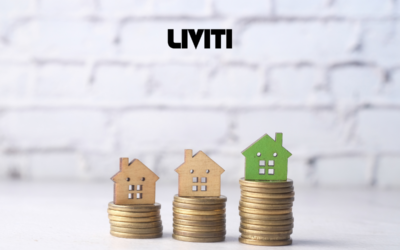Investing in property is a common strategy for wealth creation. Yet, navigating the property market can be complex. For Australians, a popular method of property investment is through a Self-Managed Super Fund (SMSF).
Investing in SMSF properties can pave the way for lucrative property investments through your superannuation fund. Discover the secrets to successful property investment strategies in this guide. Explore the potential of SMSF properties and supercharge your investment portfolio today.

This approach allows individuals to use their superannuation for property investment. However, SMSF property investing is not without its intricacies. Understanding the legalities, financial implications, and strategic considerations is crucial.
Whether you’re a current SMSF trustee, considering using your super for property investment, or a financial advisor seeking to broaden your knowledge, this guide is for you. We’ll delve into the benefits and risks of SMSF property investing. We’ll explore the regulations that govern it and the strategies that can maximize your returns.
By the end of this guide, you’ll have a deep understanding of SMSF property investing. You’ll be equipped to make informed decisions about your retirement savings and investment properties.
Let’s dive into this journey to financial literacy and empowerment.
Understanding SMSF Property Investing
Before we delve into the specifics of property investment through an SMSF, it’s important to understand what an SMSF is and why it has become a popular vehicle for property investment in Australia.

What is SMSF?
An SMSF, or Self-Managed Super Fund, is a private superannuation fund. You manage it yourself, hence the name. It’s structured to provide retirement income for members, who are also the trustees.
In essence, an SMSF gives you control over your retirement savings.
The Rise of SMSF Property Investing in Australia
In recent years, SMSF property investing has gained popularity in Australia.
This trend is driven by the desire for greater control over superannuation investments.
The ability to invest in property, a tangible asset, is appealing to many.
Moreover, the potential for significant returns has fueled interest in this investment strategy.
Advantages of Using SMSF for Property Investment

Investing in property through an SMSF offers several advantages:
- Tax benefits: SMSFs enjoy concessional tax rates, which can enhance the returns on property investments.
- Asset protection: In the event of bankruptcy, assets held within an SMSF are generally protected.
- Diversification: Property investment can provide diversification to an SMSF portfolio.
- Control: As an SMSF trustee, you have control over your investment decisions.
- Potential for high returns: With the right strategy, property investment can yield substantial returns.
However, it’s important to note that these benefits come with responsibilities and risks.
Legal Structure and Compliance of SMSFs

An SMSF is a distinct legal entity. It’s regulated by the Australian Taxation Office (ATO).
As a trustee, you’re responsible for the fund’s compliance with superannuation laws.
This includes preparing financial statements, lodging an annual return, and having the fund audited.
Non-compliance can result in penalties, including fines and disqualification as a trustee.
Understanding the legal structure and compliance requirements of an SMSF is crucial before venturing into property investment.
Setting Up Your SMSF for Property Investment
Setting up an SMSF for property investment involves several steps.
These include establishing the fund, defining the trust deed, creating an investment strategy, and understanding the associated costs.

The Role of Trustees in SMSF
As a SMSF trustee, you have significant responsibilities.
You’re responsible for managing the fund in the best interests of the members.
This includes making investment decisions, ensuring compliance with superannuation laws, and maintaining accurate records.
It’s a role that requires a good understanding of financial matters and a commitment to staying informed about changes in superannuation laws and market conditions.
Creating an SMSF Trust Deed and Investment Strategy

The trust deed is a legal document that sets out the rules for establishing and operating your SMSF.
It includes details such as the fund’s objectives, who can be a member, and how benefits are paid. It’s important to ensure that the trust deed allows for property investment.
In addition to the trust deed, you’ll need to develop an investment strategy. This is a plan that outlines how the fund’s assets will be invested to achieve the members’ retirement goals. The investment strategy should consider the personal circumstances of all the fund members, including their age, risk tolerance, and retirement objectives.
It should also be reviewed regularly to ensure it remains appropriate.
Costs Associated with Setting Up an SMSF

Setting up an SMSF involves costs. These include the fees for establishing the fund, obtaining legal advice on the trust deed, and registering the fund with the ATO.
There are also ongoing costs, such as the annual audit fee, tax return preparation, and investment fees. It’s important to consider these costs when deciding whether to set up an SMSF for property investment.
Buying Property with Your SMSF
Investing in property through your SMSF can be a smart way to grow your retirement savings. However, it’s a complex process that requires careful planning and strict adherence to superannuation laws.
Contact us today to get expert advice and support on your SMSF property investment journey.
Criteria for SMSF Property Investments

When investing in property through your SMSF, there are specific criteria that must be met.
These include:
- The property must meet the ‘sole purpose test’ of providing retirement benefits to fund members.
- The property must not be acquired from a related party of a member.
- The property must not be lived in by a fund member or any fund members’ related parties.
- The property must not be rented by a fund member or any fund members’ related parties.
It’s also important to note that your SMSF cannot buy a property using borrowed money unless certain conditions are met. These conditions are outlined in the Limited Recourse Borrowing Arrangements (LRBAs) rules.
The Process of Purchasing Property Through an SMSF

The process of buying property through your SMSF involves several steps.
These include:
- Identifying a suitable property that meets the SMSF investment strategy and the superannuation laws.
- Arranging for the necessary funds to be available in your SMSF.
- Contracting to buy the property in the name of the SMSF.
- Settling the property purchase using SMSF funds.
It’s important to note that all property investment decisions must be made in the best interests of all fund members and for the sole purpose of providing retirement benefits.
SMSF Borrowing: Limited Recourse Borrowing Arrangements (LRBAs)

Borrowing money to buy property through your SMSF is possible under a Limited Recourse Borrowing Arrangement (LRBA). Under an LRBA, your SMSF can take out a loan to purchase a single asset, or a collection of identical assets that have the same market value.
The asset is held in a separate trust until the SMSF property loan is repaid. This means that the lender only has recourse to the asset purchased with the borrowed funds, protecting the other assets in your SMSF from being used to repay the SMSF property loan.
However, LRBAs come with risks. These include the potential for higher costs, the risk of negative cash flow, and the potential for the SMSF to be left with a single, illiquid asset.
It’s important to seek professional advice before entering into an LRBA.
Managing Your SMSF Property Investment
Managing your SMSF property investment requires a deep understanding of superannuation laws and regulations. It also requires a strategic approach to property selection, financing, and management.

The Sole Purpose Test and SMSF Investments
The sole purpose test is a fundamental principle of SMSF investing. It stipulates that the primary purpose of your SMSF should be to provide retirement benefits to its members.
This means that all investment decisions, including property investments, must align with this purpose. Any investment that provides a present-day benefit to members or related parties is likely to breach the sole purpose test.
Types of Properties Suitable for SMSF Investment
There are various types of properties that your SMSF can invest in. These include residential properties, commercial properties, and industrial properties.
However, there are strict rules around residential property investments. For instance, the property cannot be occupied by a fund member or any related parties.
Commercial properties, on the other hand, can be leased to a member’s business, provided the lease is on commercial terms.
Risks and Considerations in SMSF Property Investing

Investing in property through your SMSF comes with several risks and considerations.
These include:
- Liquidity risk: Property is a relatively illiquid asset, which could pose challenges if the fund needs to access cash quickly.
- Concentration risk: Investing a large proportion of the fund’s assets in a single property could lead to a lack of diversification.
- Market risk: Property values can fluctuate due to changes in the economy, interest rates, and property market conditions.
- Compliance risk: Failure to comply with superannuation laws and regulations can result in penalties and the loss of the fund’s concessional tax status.
It’s crucial to consider these risks and seek professional advice before making property investment decisions.
Property Valuation and SMSF Compliance
Regular property valuation is a key aspect of SMSF compliance. The Australian Taxation Office (ATO) requires SMSFs to value their assets at market value for the purposes of preparing financial statements.
This includes any properties owned by the fund. The valuation must be objective, supportable, and in line with the ATO’s valuation guidelines. Failure to comply with these requirements can result in penalties and compliance issues.
Financial Implications of SMSF Property Investing

Investing in property through your SMSF can have significant financial implications. These can impact your fund’s cash flow, tax position, and overall financial performance.
Understanding these implications is crucial for effective financial planning and decision-making. It can also help you avoid potential pitfalls and maximize your investment returns.
Tax Considerations for SMSF Property Investors
One of the key financial implications of SMSF property investing relates to taxation. SMSFs enjoy concessional tax treatment, which can make property investing more attractive.
For instance, rental income earned by the fund is generally taxed at a maximum rate of 15%. This rate can be even lower if the property is supporting a retirement income stream.
Capital gains tax (CGT) is another important consideration. If your SMSF sells a property, it may be liable for CGT.
However, the CGT rate for SMSFs is generally lower than the personal tax rate. Moreover, if the property was used to support a pension, the CGT could be zero.
SMSF Auditing and the Role of Approved Auditors

Another financial implication of SMSF property investing is the need for annual SMSF auditing. The Australian Taxation Office (ATO) requires all SMSFs to be audited each year by an approved SMSF auditor.
The auditor’s role is to check the fund’s compliance with superannuation laws and assess the accuracy of its financial records. The SMSF audit process includes reviewing the fund’s property investments and related transactions.
The auditor will check that the property was purchased in line with the fund’s investment strategy and that all transactions were conducted at arm’s length.
SMSF Insurance and Protection of SMSF Property Investments

SMSF Insurance is a crucial aspect of protecting your SMSF property investments.
The Superannuation Industry (Supervision) Act requires all SMSFs to consider insurance as part of their investment strategy. This includes considering the need for insurance cover for the fund’s assets, including property.
Property insurance can protect your SMSF from financial loss due to property damage or loss of rental income. It’s important to ensure that the insurance policy is held in the name of the SMSF to ensure compliance with superannuation laws.
Remember, insurance premiums paid by the SMSF are generally tax-deductible.
SMSF Loans and Financing Options
Investing in property through your SMSF often requires a significant amount of capital.
While some funds have sufficient cash to buy property outright, others may need to borrow funds.

This is where SMSF loans come into play. These are specialized loans designed for SMSFs to invest in property.
However, borrowing through an SMSF is subject to strict rules and regulations.
Understanding SMSF Loans and Lending Criteria
SMSF loans are also known as Limited Recourse Borrowing Arrangements (LRBAs).
Under an LRBA, the SMSF trustee takes out a loan to purchase a single asset, such as a property. The lender only has recourse to the asset purchased with the borrowed funds. This means that the other assets of the SMSF are protected in case of default.
Lenders have specific criteria when assessing SMSF loan applications. These may include the fund’s cash flow, the type and value of the property, and the fund’s ability to service the loan.
It’s important to understand these criteria and ensure your SMSF meets them before applying for a loan.
How to Secure an SMSF Home Loan

Securing an SMSF home loan involves several steps.
First, you need to ensure your SMSF’s trust deed allows for borrowing. If not, you may need to amend the deed.
Next, you need to prepare a comprehensive investment strategy. This should outline how the property investment fits into the fund’s overall investment goals and risk profile.
You also need to establish a separate property trust. This trust will hold the property on behalf of the SMSF until the loan is repaid.
Finally, you need to apply for the loan. This involves providing the lender with all necessary documentation, including the SMSF’s financial statements, trust deed, and investment strategy.
Remember, securing an SMSF home loan can be complex. It’s often advisable to seek professional advice to ensure you navigate the process correctly and comply with all legal requirements.
Maximizing Returns and Planning for the Future
Investing in property through an SMSF is not just about buying a property and waiting for it to appreciate in value.
It requires careful planning and strategic decision-making. The goal is to maximize returns while minimizing risks. This involves selecting the right property, managing it effectively, and planning for the future.
Investment Strategies for SMSF Property Investors
A well-thought-out investment strategy is crucial for successful SMSF property investing. This strategy should align with the fund’s investment objectives and risk tolerance.
It should consider factors such as the type of property to invest in, the location, and the potential return on investment. It should also take into account the fund’s liquidity needs and the impact of the investment on the fund’s diversification.
If you are a first home buyer, have a look into our blog on using SMSF to buy a house as a first home buyer.
Retirement Planning and SMSF Property Investment

SMSF property investing is often part of a broader retirement planning strategy. The goal is to build a property portfolio that can provide a steady income stream in retirement.
However, it’s important to remember that property is a long-term investment.
It may take many years for a property to appreciate in value and generate significant rental income. Therefore, SMSF members need to consider their retirement timeline when investing in property.
They also need to ensure they have sufficient liquidity to meet their living expenses in retirement.
Exit Strategies for SMSF Property Investments
Having a clear exit strategy is crucial when investing in property through an SMSF.
This involves planning for the eventual sale of the property. The timing of the sale can have significant tax implications.
For example, selling the property after the SMSF has entered the pension phase may result in a capital gains tax exemption. Selling the property can also have liquidity implications. It may take time to sell the property and convert it into cash.
Therefore, SMSF members need to plan their exit strategy carefully.
They need to consider the potential tax and liquidity implications and ensure they align with their retirement goals.
Common Pitfalls and How to Avoid Them

Investing in property through an SMSF can be a rewarding venture. It’s not without its challenges and potential pitfalls.
Understanding these risks and how to navigate them is crucial for successful SMSF property investing.
Navigating SMSF Property Investment Risks
One of the key risks in SMSF property investing is lack of diversification. Investing a large proportion of the fund’s assets in a single property can expose the fund to significant risk.
If the property market experiences a downturn, the value of the fund’s assets could decrease significantly. This could impact the fund’s ability to meet its retirement objectives.
Another risk is liquidity.
Property is a relatively illiquid asset, which means it can take time to sell and convert into cash. This can be problematic if the fund needs to access cash quickly, for example, to pay benefits to members or meet other financial obligations.
Ensuring SMSF Property Investment Compliance
Compliance is another major challenge in SMSF property investing. The rules and regulations governing SMSFs are complex and constantly evolving.
Non-compliance can result in significant penalties, including fines and disqualification of the fund’s trustees.
It’s crucial for SMSF trustees to stay up-to-date with the latest rules and regulations.
They should seek professional advice to ensure they understand their obligations and are able to comply with them.
Trustees also need to ensure they keep accurate and up-to-date records of all SMSF transactions.
This includes records of property purchases, rental income, property expenses, and any improvements or renovations made to the property.
Next Steps…

Investing in property through an SMSF can be a powerful strategy for wealth creation and retirement planning.
However, it’s a complex process that requires careful planning, ongoing management, and a deep understanding of the rules and regulations.
It’s crucial to consider the potential risks and rewards, and to ensure that your investment aligns with your fund’s investment strategy and retirement objectives.
Recap of Key Takeaways
SMSF property investing offers potential tax advantages, the opportunity for capital growth, and a steady income stream.
However, it also comes with significant responsibilities and potential risks, including compliance risks, liquidity risks, and the risk of inadequate diversification.
Seeking Professional Advice
Given the complexities and potential risks, it’s highly recommended to seek professional advice before embarking on SMSF property investing.
A financial advisor or SMSF specialist can provide valuable guidance, help you understand your obligations, and assist you in making informed decisions that align with your financial goals.
FAQs
- What is SMSF?
An SMSF, or Self-Managed Super Fund, is a private superannuation fund that individuals manage themselves, offering control over investment decisions, including property investments. - How ultimately to live in your SMSF property?
Living in an SMSF property is not permitted under superannuation laws, as the sole purpose of an SMSF is to provide retirement benefits to its members, and living in the property would breach this purpose. - How to set up SMSF?
Setting up an SMSF involves several steps, including establishing the fund, defining the trust deed, appointing trustees, creating an investment strategy, and ensuring compliance with legal and regulatory requirements. - How to start a SMSF?
To start an SMSF, individuals need to research and understand the responsibilities of being a trustee, engage professional advice, prepare necessary documentation, establish the fund, and commence the process of investment selection and management. - Can I Airbnb my SMSF property?
Renting out an SMSF property on platforms like Airbnb is generally not allowed, as the property must be solely used for investment purposes and cannot provide present-day benefits to members or related parties. - Can I sell property from my SMSF to myself?
Selling property from an SMSF to a fund member or related party is prohibited under superannuation laws, as it constitutes a breach of the ‘arm’s length’ rule, which requires transactions to be conducted at market value and without conflict of interest. - What does SMSF stand for?
SMSF stands for Self Managed Super Fund, which is a private superannuation fund that allows individuals to manage their retirement savings and make investment decisions, including property investments. - What are the advantages of investing in property through an SMSF?
Investing in property via SMSF offers tax benefits, asset protection, control over investments, diversification, and potential for high returns, aligning with your retirement goals. - What types of properties can I invest in through my SMSF?
SMSFs can invest in various properties, including residential, commercial, and industrial, with different rules governing each type, enhancing investment flexibility. - Where can I find professional advice for SMSF property investing?
As holding years of industry experiences in property investment, Liviti’s property financing professionals offer comprehensive guidance and strategies tailored to your financial goals. Contact us today for personalized advice and start maximizing returns on your SMSF property investments.




